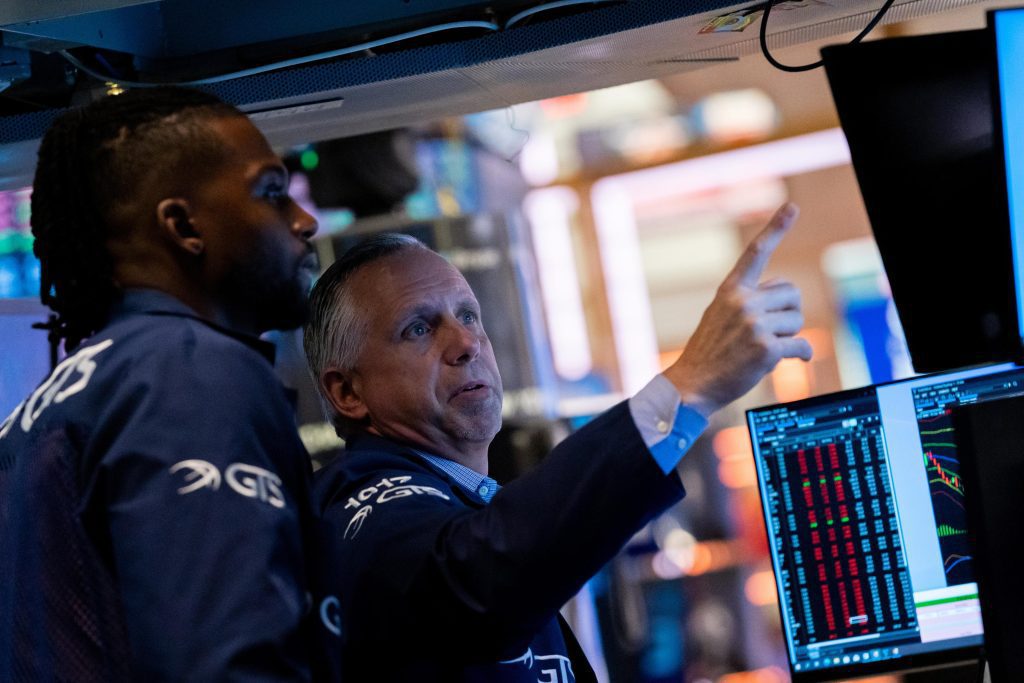
Asian markets fell on Wednesday after Wall Street fell the most since June 2020 as a report showed that inflation has maintained a surprisingly strong grip on the US economy.
The Nikkei 225 benchmark in Tokyo lost 2.8% in early trading Wednesday, to 27816.58, while the S&P/ASX 200 in Sydney fell 2.5% to 6,834.80. In Seoul, Kospi lost 2.6% to 2386.29.
US futures were higher, with the Dow Jones Industrial Average and the S&P 500 Index gaining 0.1%. European futures contracts also fell.
On Tuesday, the Dow Jones lost more than 1,250 points and the S&P 500 fell 4.3%. Tuesday’s hotter-than-expected report on inflation has traders preparing for the Federal Reserve to raise interest rates further, adding to the risks to the economy.
The heavy selling did not wipe out market gains over the past four days, but it did end a four-day winning streak for major US indices and erased an early rally in European markets.
The S&P 500 fell 4.3% to 3,932.69. The Dow Jones fell 3.9% to 31104.97 and the Nasdaq Composite closed 5.2% lower at 11633.57.
Bond prices also fell sharply, driving up their yields, after a report showed that inflation only slowed to 8.3% in August.instead of economists’ expectations of 8.1%.
The yield on the two-year Treasury, which tends to follow expectations for the Fed’s actions, rose to 3.74% from 3.57% late Monday. The 10-year yield, which helps determine the trend of mortgages and other loan rates, rose to 3.42% from 3.36%.
The hotter than expected reading has traders bracing for the Federal Reserve to eventually raise interest rates more than expected to combat inflationwith all the attendant risks to the economy.
“Right now, the journey is not so much a concern as the destination,” said Brian Jacobsen, senior investment analyst at Allspring Global Investments. “If the Fed wants the rate to go up and hold, the big question is what the level is.
All but six of the stocks in the S&P 500 fell. Technology and other high-growth companies have fallen more than the rest of the market because they are seen as the most vulnerable to rising rates.
Most of Wall Street came today believing that the Fed will raise its key short-term interest rate by a large three-quarters of a percentage point at its meeting next week. But the hope was that inflation was returning to normal levels after peaking in June at 9.1%.
Such a slowdown could allow the Fed to reduce the size of interest rate increases through the end of this year, and is likely to remain flat until early 2023.
Tuesday’s report dashed some of those hopes. Several data points were worse than economists had expected, including some that the Federal Reserve pays special attention to, such as inflation outside of food and energy prices.
Gargi Choudhury, head of investment strategy at iShares, said markets honed a 0.6% rise in such prices during August from July, twice what economists had expected.
Traders are now seeing a one in three chance that the Fed will raise the benchmark interest rate by a full percentage point next week, four times the usual move. No one in the futures market had expected such a rally the day before.
The Fed has already raised its benchmark interest rate four times this year, with the last two increases by three-quarters of a percentage point. The federal funds rate is currently between 2.25% and 2.50%.
Higher prices hurt the economy by making it more expensive to buy a house, car, or anything else purchased on credit. Mortgage rates It has already reached its highest level since 2008, causing the housing industry to suffer. The hope is that the Fed can walk the tightrope of slowing the economy enough to eliminate high inflation, but not so much that it creates a painful recession.
Tuesday’s data cast doubt on hopes for such a “soft landing”. Higher rates also hurt the prices of stocks, bonds, and other investments.
Investments that are seen as the most expensive or riskiest are hit the hardest at higher rates. Bitcoin is down 9.4%.
Expectations of more Fed strength on the dollar also helped add to its already solid gains for the year. The dollar was rising against other currencies in large part because the Fed was raising interest rates faster and with a larger profit margin than many other central banks.
The dollar bought 144.59 Japanese yen, up from 144.57 yen late Tuesday. The euro rose to 0.9973 cents from 0.9969 cents.
Oil prices rose. Standard US crude added 38 cents to $87.69 a barrel in electronic trading on the New York Mercantile Exchange. It lost 47 cents to $87.31 on Tuesday. Brent crude, the international pricing standard, jumped 38 cents to $93.55 a barrel.
___
AP Business writers Stan Choi, Alex Vega, and Damien J.

“Web maven. Infuriatingly humble beer geek. Bacon fanatic. Typical creator. Music expert.”





More Stories
Elon Musk Denies Reports He’s Directing $45 Million to Trump PAC
This extra-long yellow Cadillac electric sedan has a fridge in the back seat.
CrowdStrike shares fall as IT disruption continues